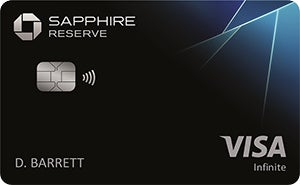Search Credit Card Offers
Terms apply to American Express benefits and offers. Enrollment may be required for select American Express benefits and offers. Visit americanexpress.com to learn more.
Capital One Spark Cash vs Chase Sapphire Reserve®
This comparison aims to help users decide between the Capital One Spark Cash and the Chase Sapphire Reserve®. Both cards offer unique benefits tailored to different spending habits and financial goals.
Card Overviews
Capital One Spark Cash
The Capital One Spark Cash is designed for businesses looking to earn straightforward cash back on all purchases. It offers a competitive rewards rate with no limits or category restrictions, making it ideal for business owners who want a simple rewards structure.
Chase Sapphire Reserve®
The Chase Sapphire Reserve® is tailored for frequent travelers who want maximum value from their rewards. This premium card offers various travel-related perks and a flexible points redemption system, making it suitable for those who travel often and seek luxury experiences.
Detailed Feature Comparison
| Feature | Capital One Spark Cash | Chase Sapphire Reserve® |
|---|---|---|
| Annual Fee | $0 intro for first year; $95 after that | $550 |
| Welcome Bonus | Earn $750 once you spend $7,500 in the first 3 months | Earn 60,000 points after you spend $5,000 in the first 3 months |
| Rewards Structure | 2% cash back on every purchase | 5x points on flights, 10x points on hotels/rentals through Chase Travel, 3x on other travel/dining, 1 point per $1 on all other purchases |
| Foreign Transaction Fee | None | None |
| Other Fees | $0 annual fee for the first year | $300 Annual Travel Credit |
| Additional Benefits | Free employee cards, rewards don’t expire | Access to airport lounges, trip insurance, point transfers to loyalty programs |
Rewards Highlights
Capital One Spark Cash
- Earn $750 cash back once you spend $7,500 in the first 3 months from account opening
- 5% cash back on hotels and rental cars booked through Capital One Travel
- 2% cash back on every purchase
Chase Sapphire Reserve®
- Earn 10x total points on hotels and car rentals when you purchase travel through Chase Travel℠.
- Earn 5x total points on flights through Chase Travel℠.
- Earn 3x points on other travel and dining.
- Earn 1 point per $1 spent on all other purchases.
Pros and Cons
Capital One Spark Cash
- Pros:
- No annual fee for the first year
- Straightforward 2% cash back on all purchases
- No foreign transaction fees
- Cons:
- Annual fee increases to $95 after the first year
- Less value for travel-focused spenders
Chase Sapphire Reserve®
- Pros:
- Comprehensive travel benefits and protections
- High rewards on travel and dining
- Access to airport lounges
- Cons:
- High annual fee of $550
- Complex rewards structure may confuse some users
Who Should Consider Which Card?
The Capital One Spark Cash is ideal for business owners who prefer a simple cash back structure and want to earn rewards on every purchase without the complication of categories. On the other hand, the Chase Sapphire Reserve® suits frequent travelers who want to maximize their rewards on travel and dining while enjoying premium benefits and protections.
Conclusion
When deciding between the Capital One Spark Cash and the Chase Sapphire Reserve®, consider your individual needs and spending patterns. Each card offers unique features that cater to different financial goals, so choose the one that aligns best with your lifestyle.

